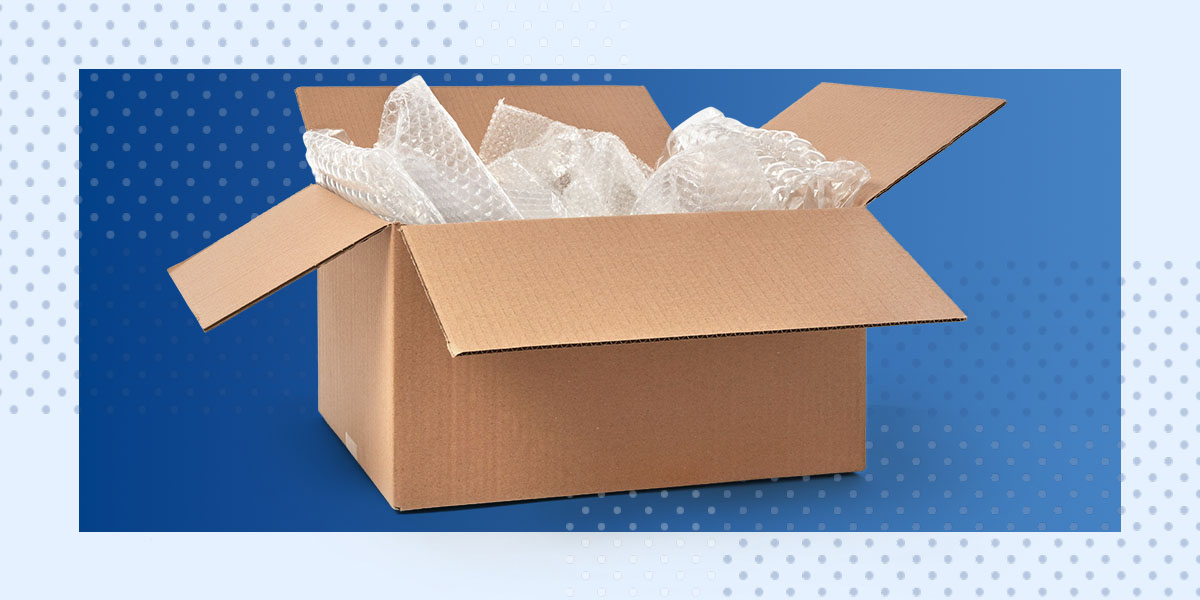Cushioning and dunnage are often included in packaging to fill gaps or absorb impact shock. Although the two terms are sometimes used interchangeably, there are differences.
Learn more about the function of cushioning and dunnage and how they protect products during storage and transit.
What Do Cushioning and Dunnage Do?
The purpose of dunnage and cushioning is to protect items in a box. These materials should prevent physical damage, provide moisture protection and act as a shock absorber for products during transit. While dunnage can describe many materials used to protect products during shipping, cushioning materials specifically limit vibration and impact shock to prevent product damage.
Materials commonly used as dunnage or cushioning include:
- Bubble wrap
- Foam, either molded or as packing peanuts
- Corrugated or craft paper
- Air pillows
- Plastic
- Wood
What Is Considered Cushioning in Protective Packaging?
Cushioning has a very specific purpose in packaging. In addition to filling gaps to stabilize the items during shipping, cushioning is designed to absorb vibration and impact shock. Cushioning materials are often found inside packages containing fragile objects, packed tightly against the product being protected.
Some common examples of material that provides box cushioning include:
- Bubble wrap
- Air pillows
- Honeycomb sheets
- Foam wrap
- Loose foam packing peanuts
Cushioning material is designed to crush, deform and diminish the force of impacts, and then return to its original state to deliver the same shock reduction benefits repeatedly. It effectively slows down the acceleration of force from the outside and absorbs it, thereby protecting the package contents.
What Are Dunnage Materials for Protective Packaging?
Dunnage is a broad term including any material that supports, protects or separates items during shipment. Unlike cushioning, dunnage is used inside or outside packages or products to ensure they reach their final destinations in perfect condition. It serves this goal by providing stability during shipping, absorbing impact or protecting the outside of goods from scratches or damage.
Common dunnage materials include:
- Wood: Frameworks or wood pallets prevent products from shifting or bumping against each other.
- Plastic: Plastic wrapping is often used in the shipping industry to prevent external damage to high-value items.
- Corrugated paper: Paper is inexpensive and works well for filling voids.
- Bubble wrap: Bubble wrap can fit into empty areas and also acts as an effective cushioning material.
Trust Edco Supply Corporation for All Your Packaging Materials and Requirements
With decades of experience, the Edco team excels at providing packing products and custom solutions for whatever you need to ship. You can expect fast turnaround times and premium packaging products to protect your goods, including selections that meet military specifications. Shop our protective packaging products or contact us today to request a quote!



